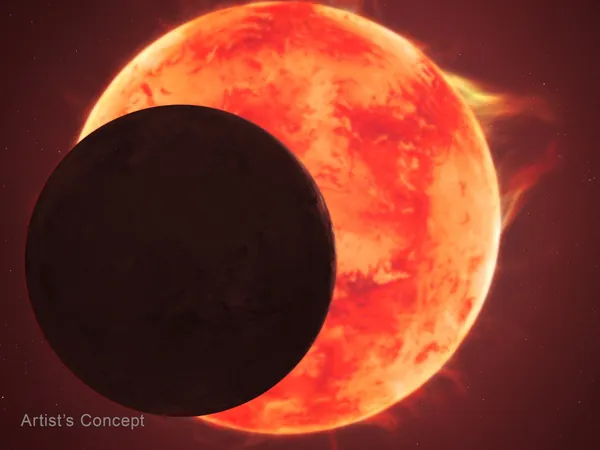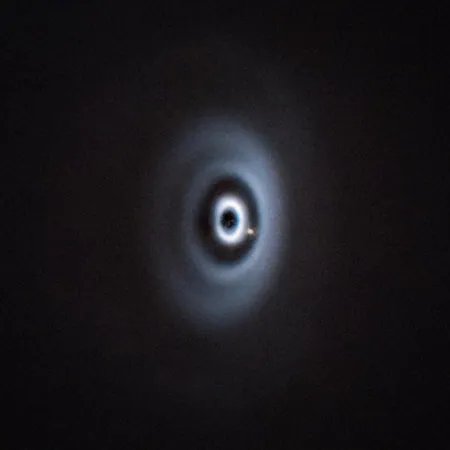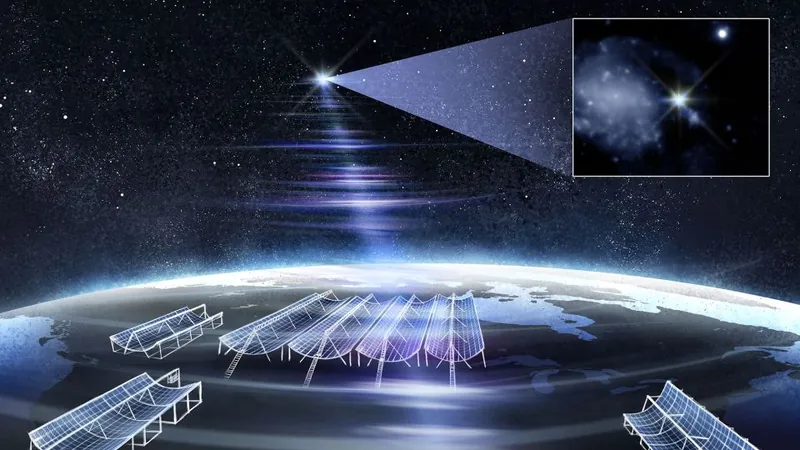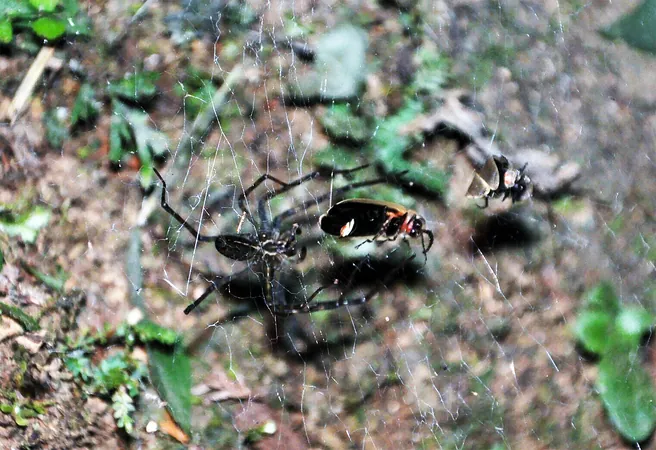
Is Life Possible on Red Dwarf Planets? Webb’s Bold Revelation about TRAPPIST-1 D
2025-08-20
Author: Noah
TRAPPIST-1 D: A Disappointment in the Search for Life
Exciting news just in: a planet resembling Earth, located a mere 40 light-years away in the TRAPPIST-1 system, has dashed hopes of being a potential twin. While it exhibits some Earth-like characteristics, new data from NASA's James Webb Space Telescope reveals a far less promising reality.
What Makes TRAPPIST-1 D So Unique?
First discovered in 2017, the TRAPPIST-1 system boasts seven rocky, Earth-sized planets orbiting a small red dwarf star. This unique setup positions TRAPPIST-1 d in the habitable zone, leading scientists to believe it could potentially harbor liquid water and atmosphere—until now.
No Atmosphere? New Findings Shock Researchers!
According to Caroline Piaulet-Ghorayeb, a leading scientist from the University of Chicago, Webb's analysis showed no signs of water vapor, methane, or carbon dioxide in TRAPPIST-1 d's atmosphere, which means it doesn’t resemble Earth’s at all. She commented, "At this point, we can rule out TRAPPIST-1 d as a candidate for Earth cousins."
Reasons Behind the Lack of Atmosphere
But why this disappointing news? Piaulet-Ghorayeb suggests a few possibilities: TRAPPIST-1 d might have an extremely thin atmosphere akin to Mars, or thick clouds similar to Venus could be blocking detection. Worst-case scenario? It could be a barren rock devoid of any atmospheric features.
The Unforgiving Nature of Red Dwarfs
The TRAPPIST-1 star isn’t exactly a hospitable neighbor. Red dwarfs often bombard orbiting planets with intense flares of radiation, potentially stripping away any atmosphere they might possess. This makes life exceedingly challenging for planets like TRAPPIST-1 d.
Hope Still Remains for Its Siblings!
But don't lose hope just yet! While TRAPPIST-1 d may not be an Earth analog, scientists are still examining its outer siblings—TRAPPIST-1 e, f, g, and h. These planets are further from their host star, giving them a better shot at retaining an atmosphere and possibly supporting life.
The Bigger Picture: Searching for Life Beyond Earth
This groundbreaking research not only sheds light on TRAPPIST-1 d's disappointing atmospheric conditions but lays crucial groundwork for NASA’s future missions to understand which planets could genuinely support life. With ongoing studies, including the upcoming Habitable Worlds Observatory, we are one step closer to answering the age-old question: Are we alone in the universe?
In summary, while TRAPPIST-1 d may not hold the key to extraterrestrial life, its examination allows scientists to dive deeper into planetary atmospheres and their potential to sustain life. Stay tuned as we continue to explore the vast unknown!









 Brasil (PT)
Brasil (PT)
 Canada (EN)
Canada (EN)
 Chile (ES)
Chile (ES)
 Česko (CS)
Česko (CS)
 대한민국 (KO)
대한민국 (KO)
 España (ES)
España (ES)
 France (FR)
France (FR)
 Hong Kong (EN)
Hong Kong (EN)
 Italia (IT)
Italia (IT)
 日本 (JA)
日本 (JA)
 Magyarország (HU)
Magyarország (HU)
 Norge (NO)
Norge (NO)
 Polska (PL)
Polska (PL)
 Schweiz (DE)
Schweiz (DE)
 Singapore (EN)
Singapore (EN)
 Sverige (SV)
Sverige (SV)
 Suomi (FI)
Suomi (FI)
 Türkiye (TR)
Türkiye (TR)
 الإمارات العربية المتحدة (AR)
الإمارات العربية المتحدة (AR)